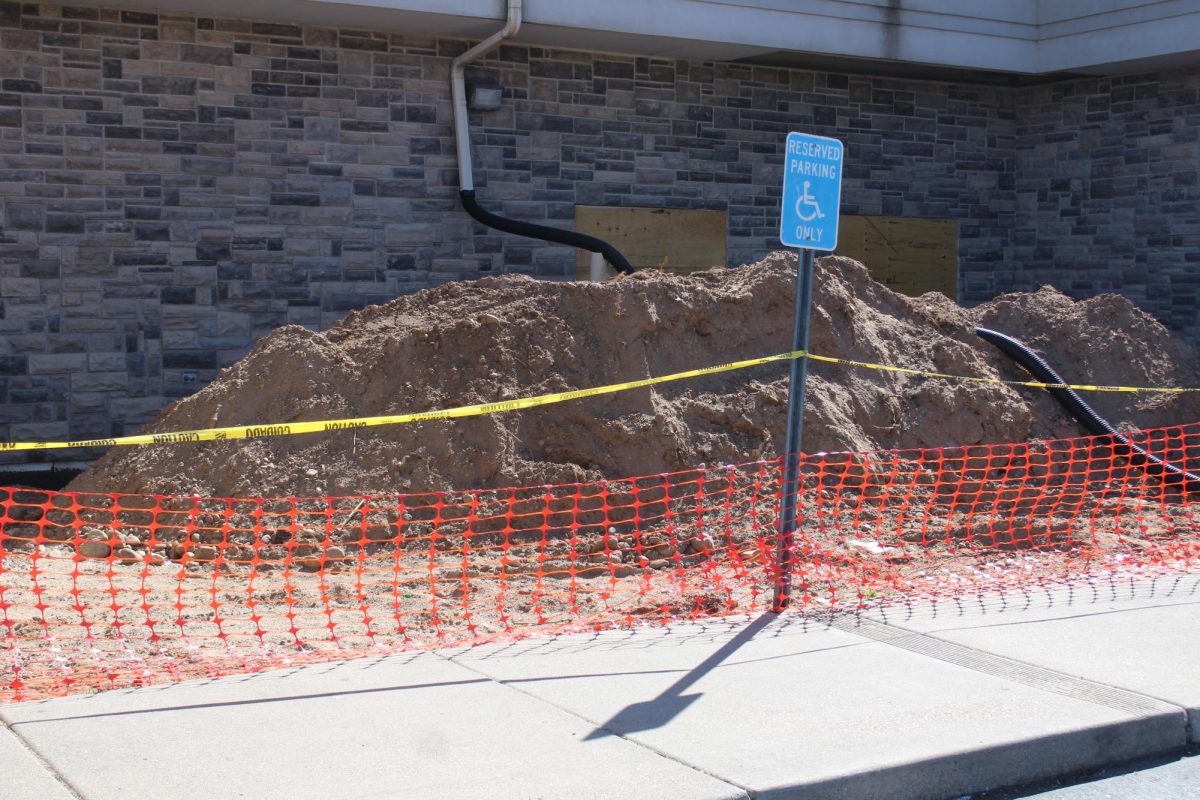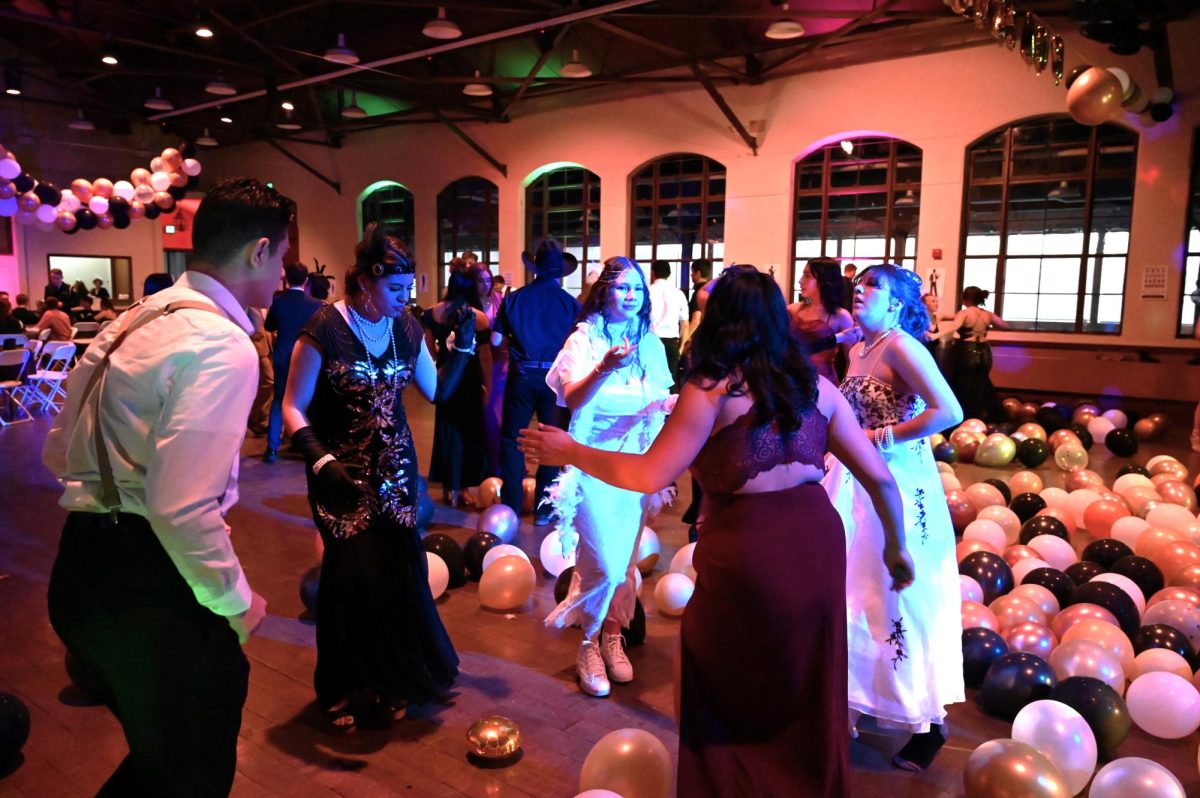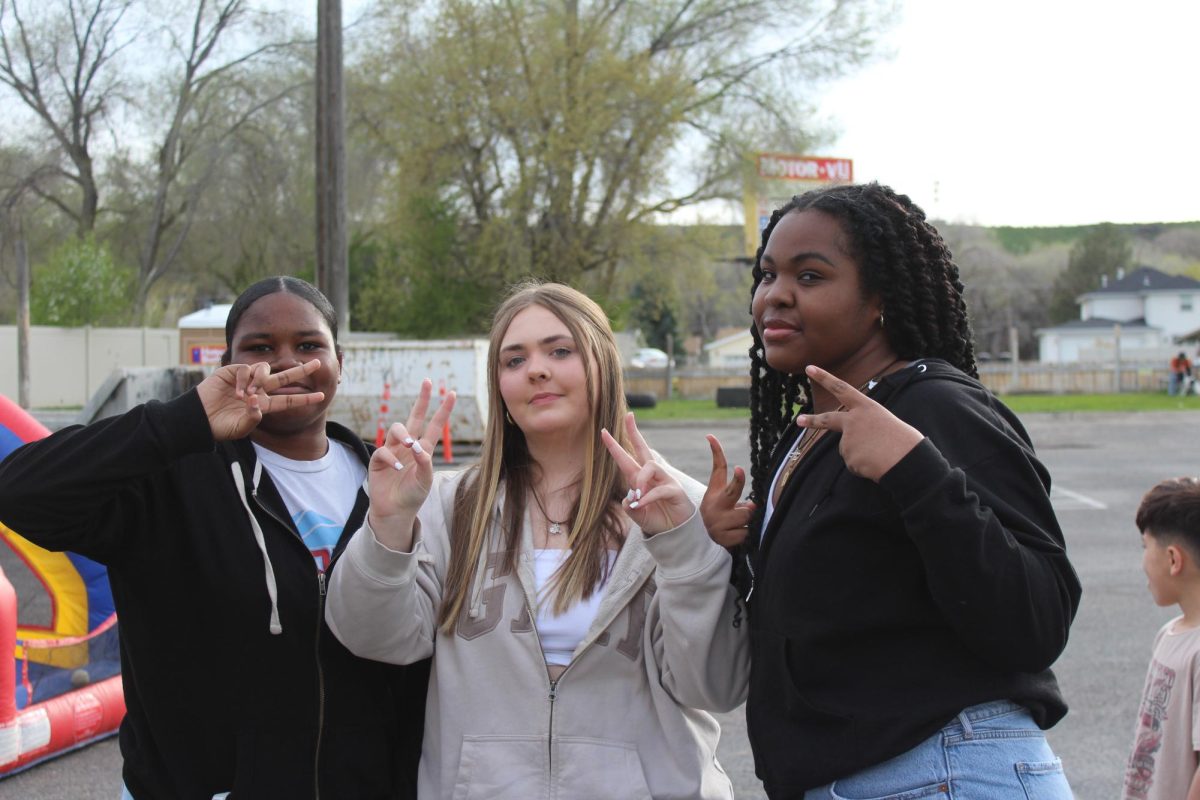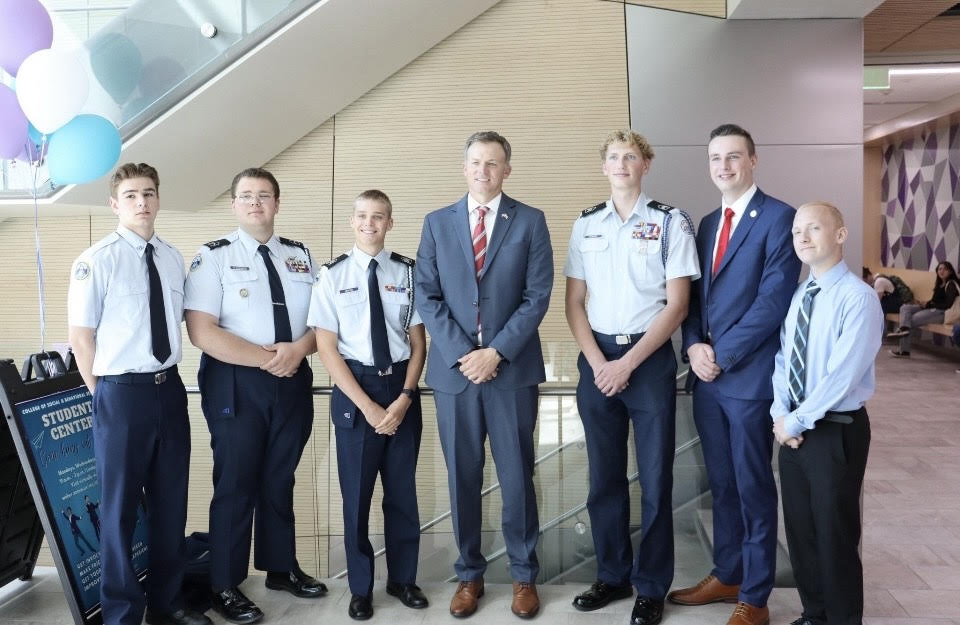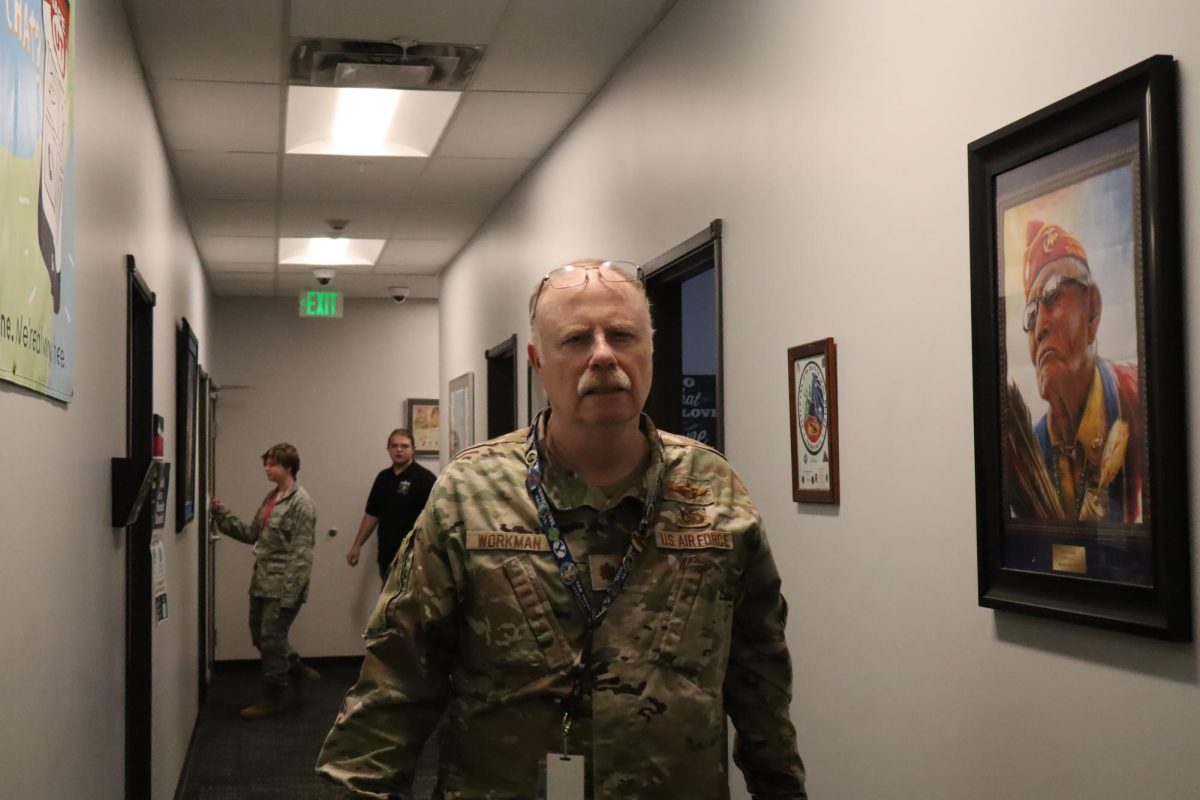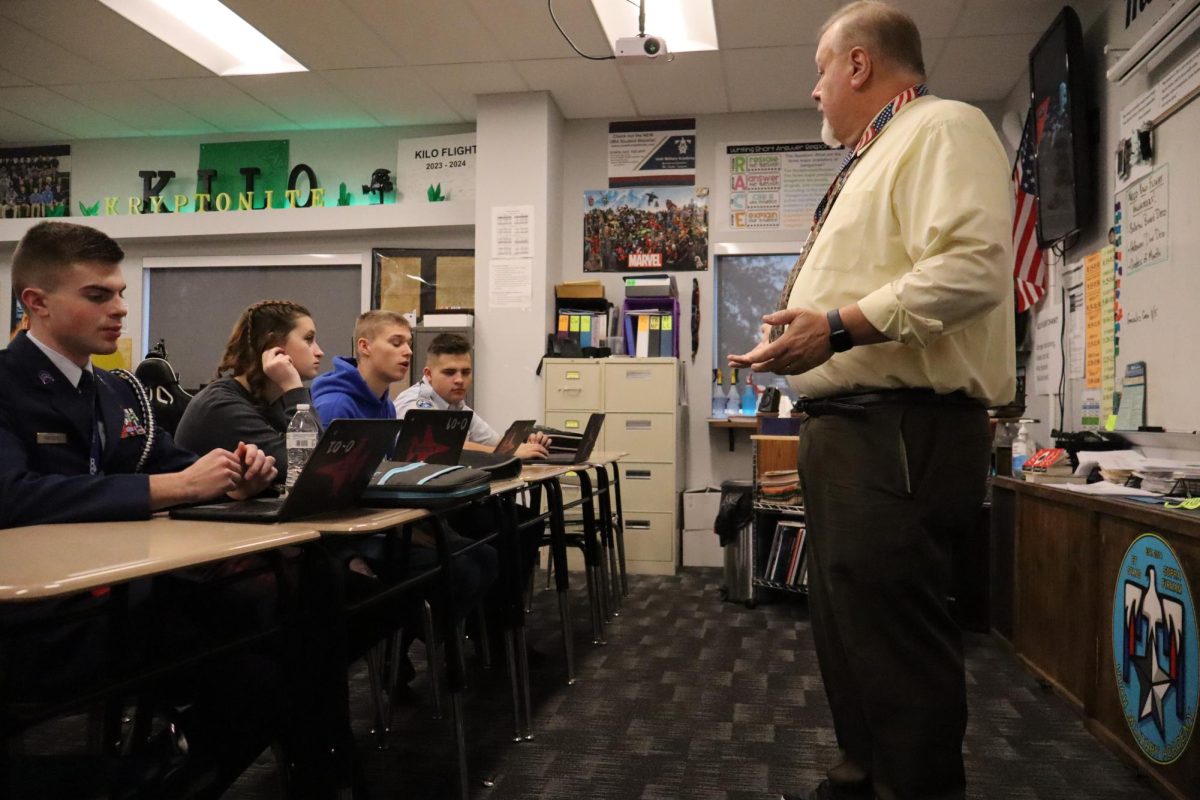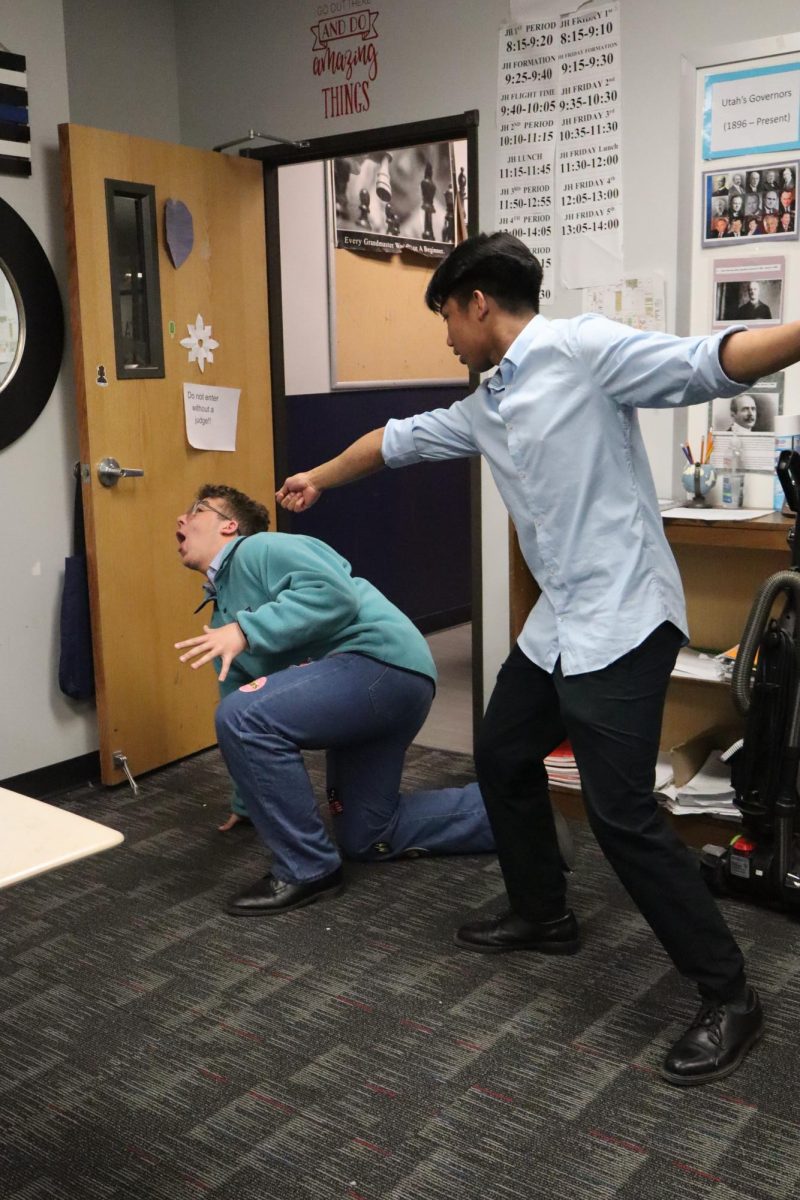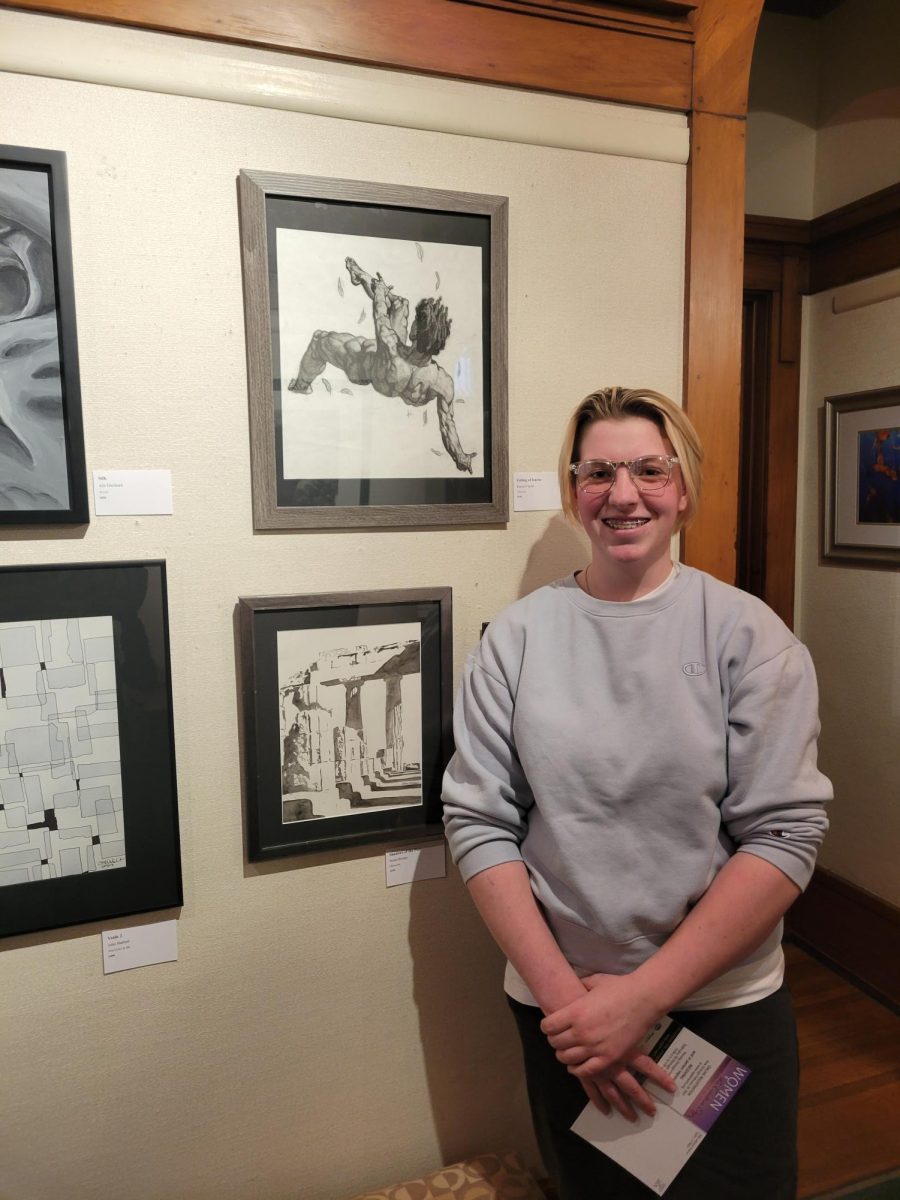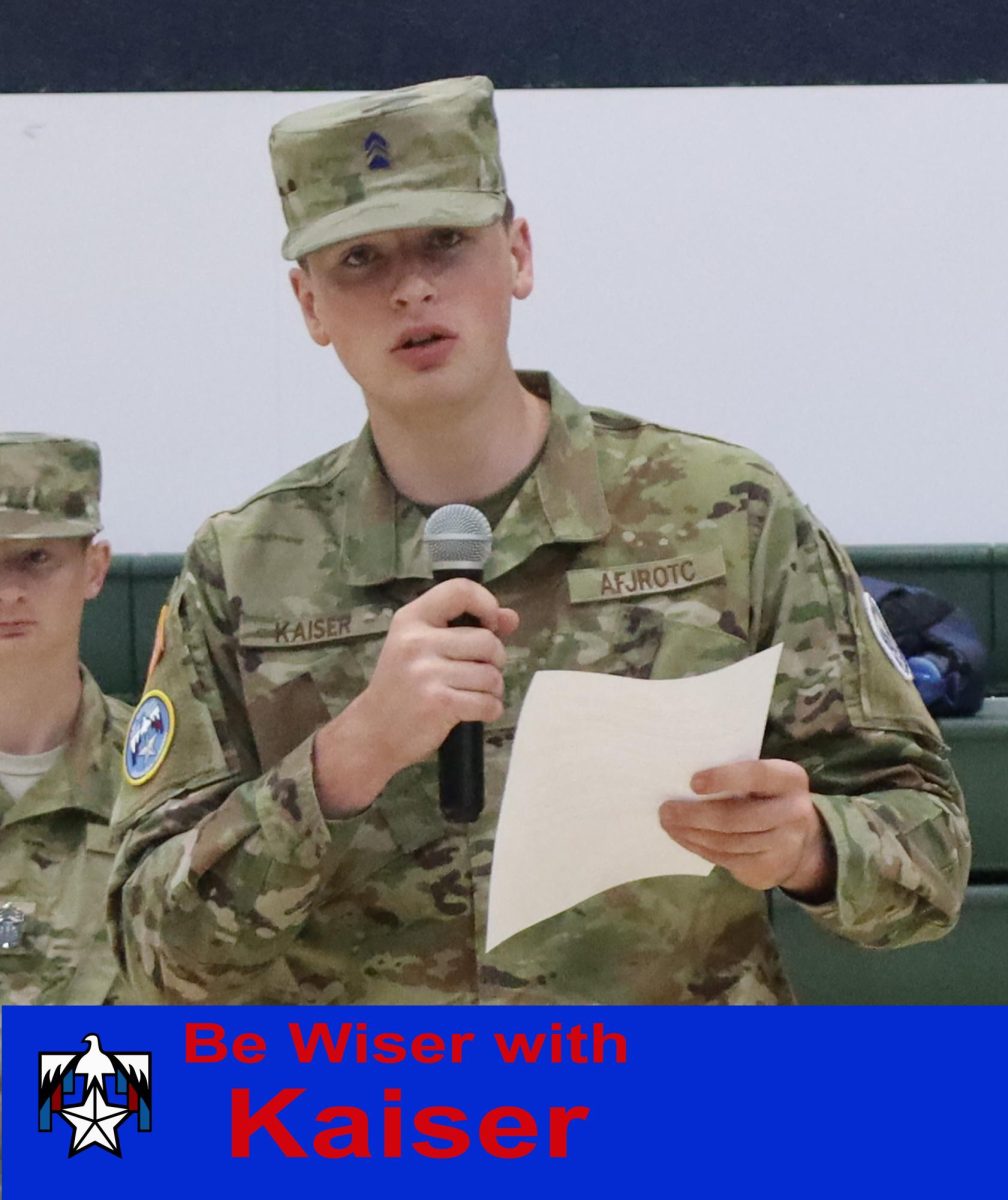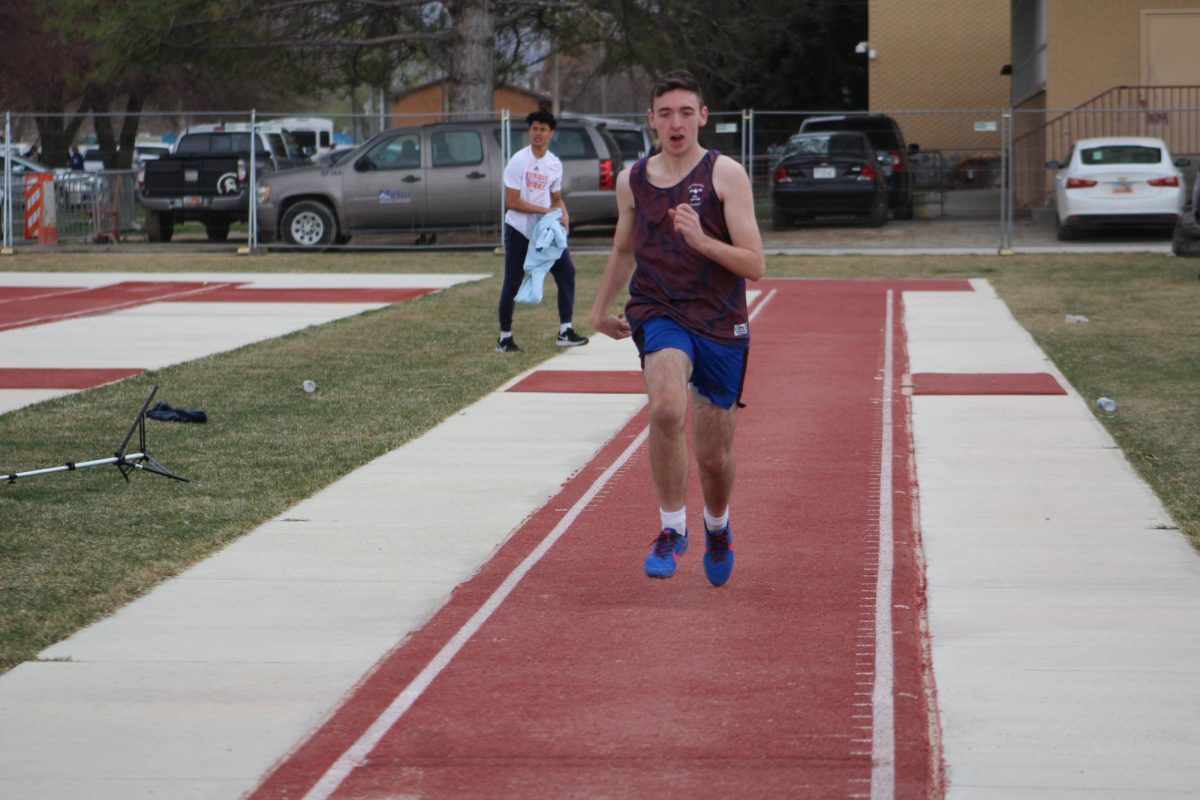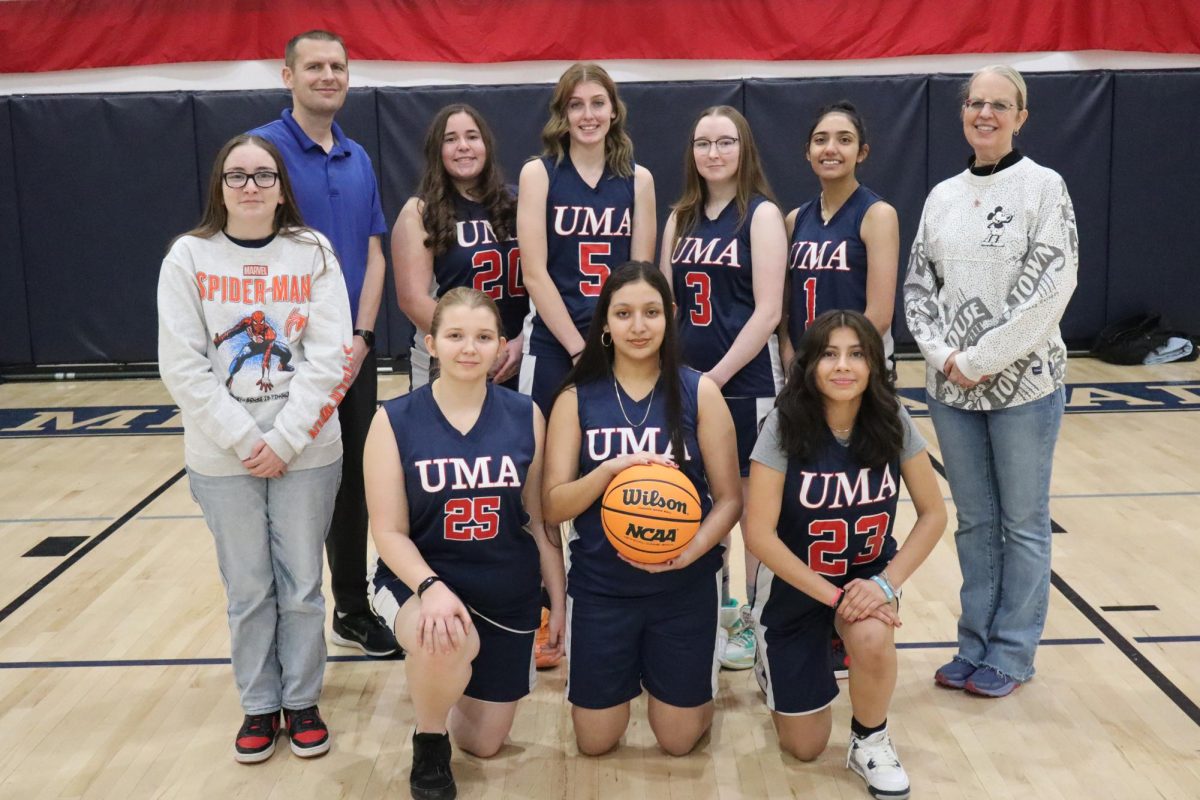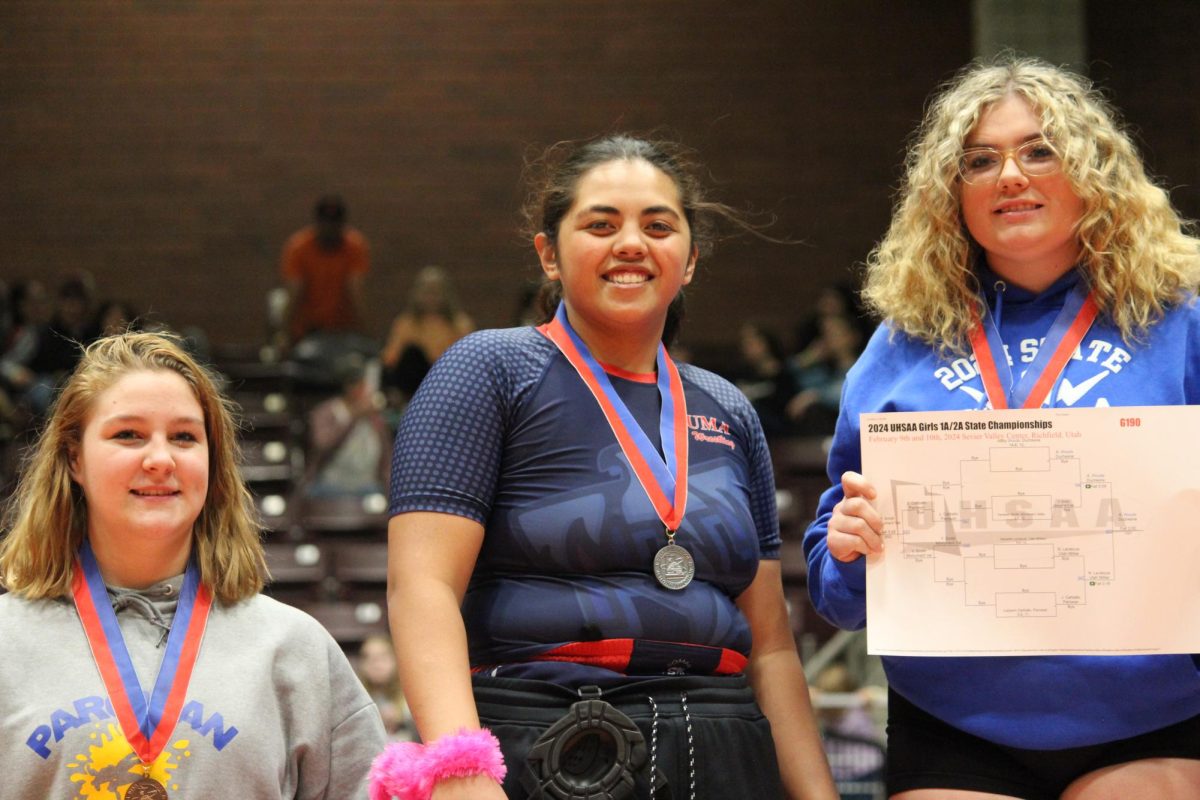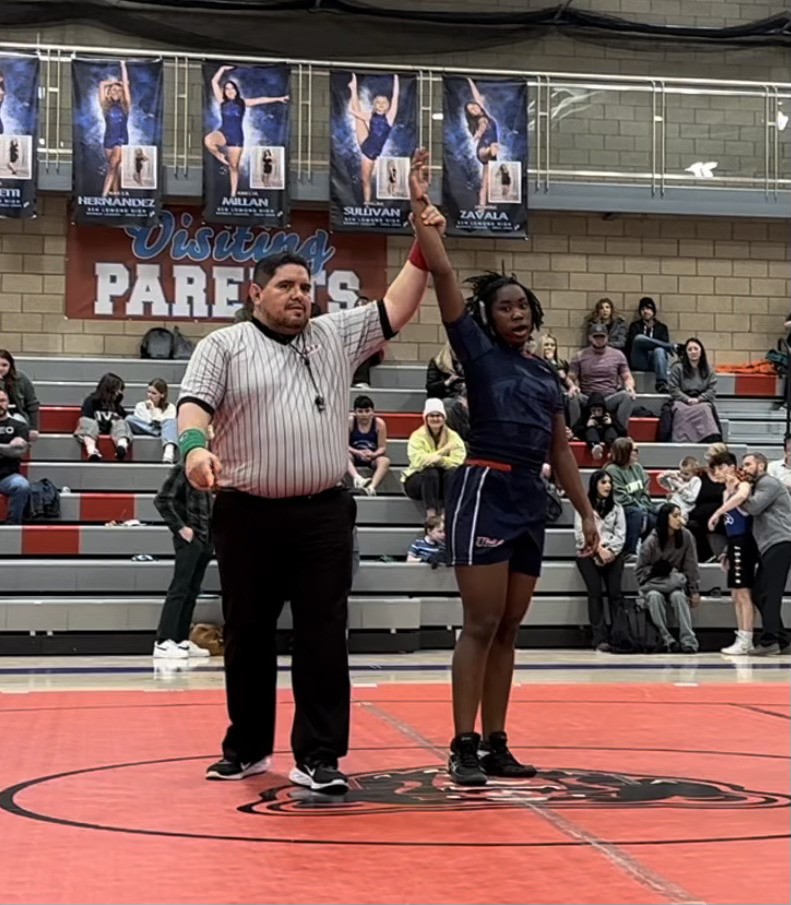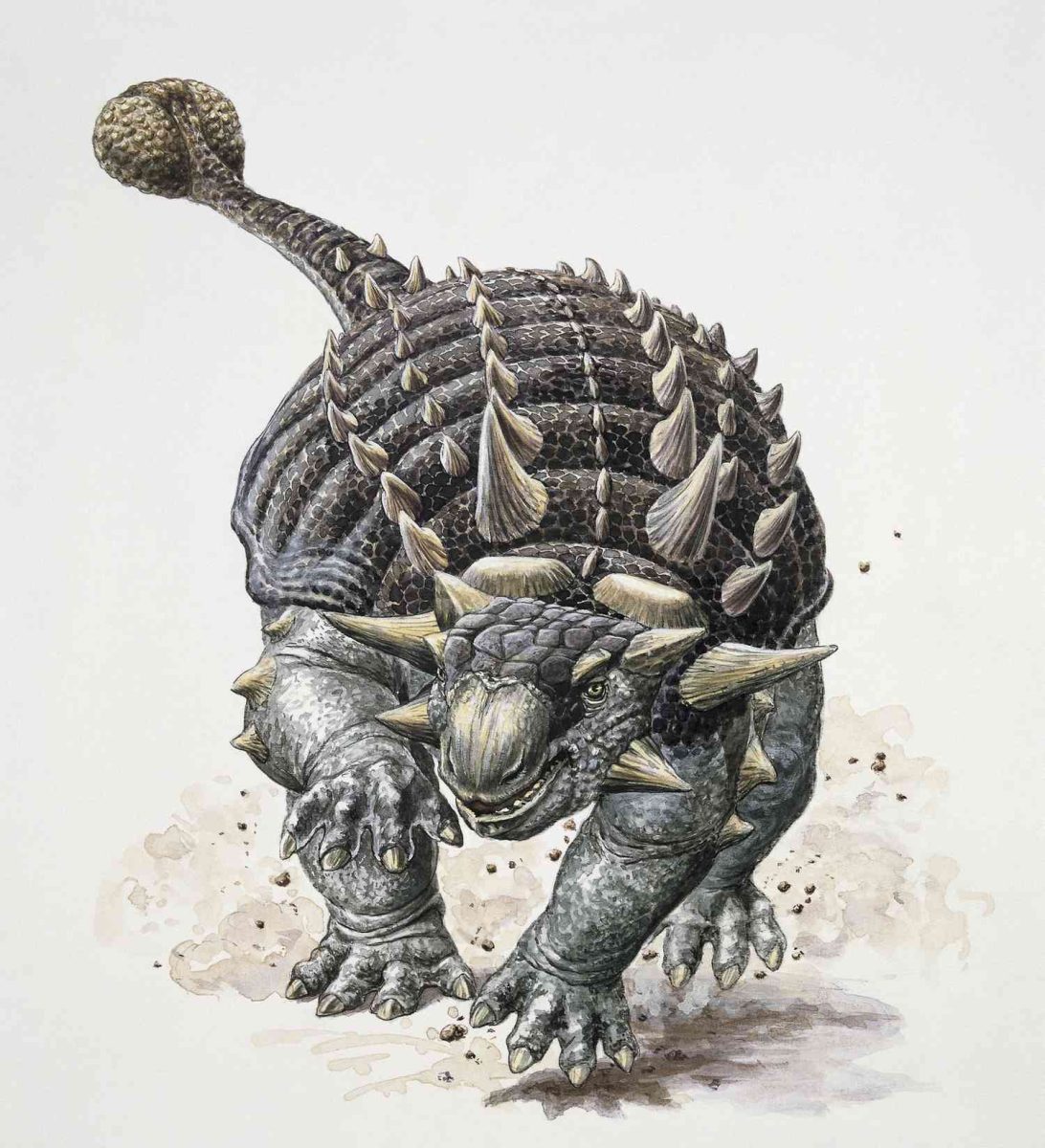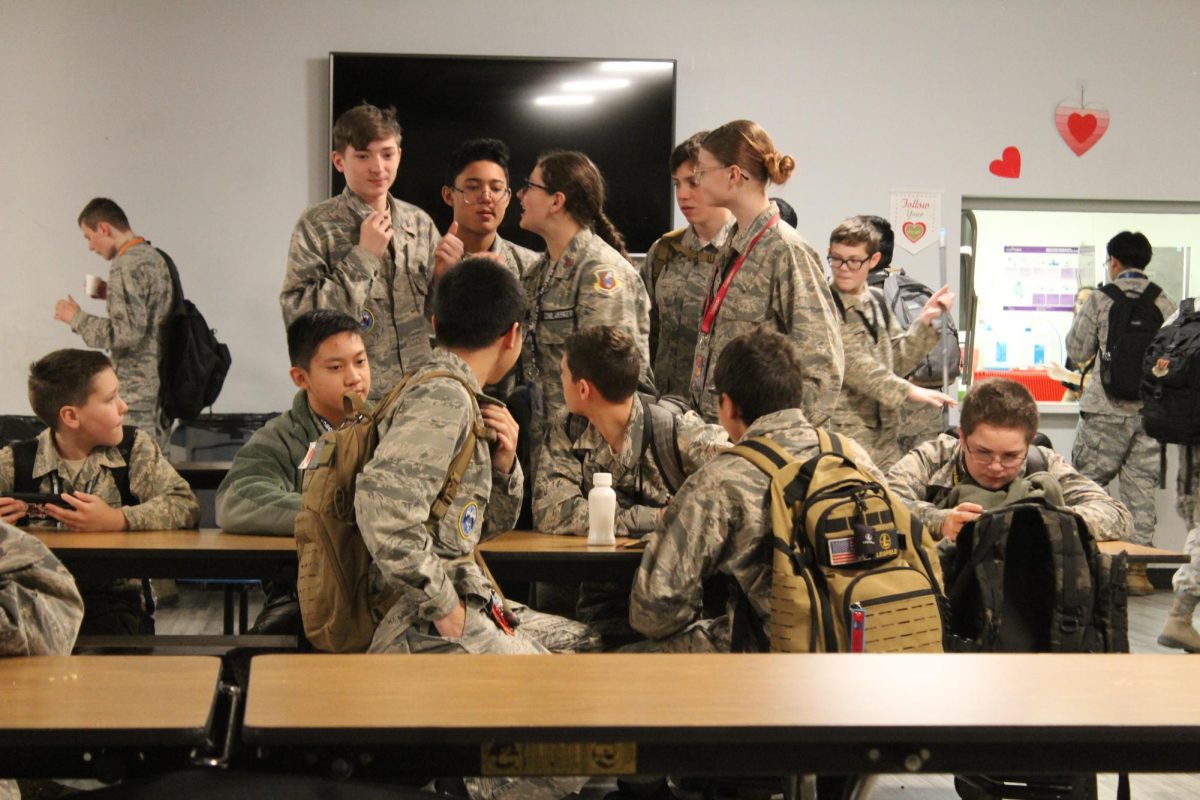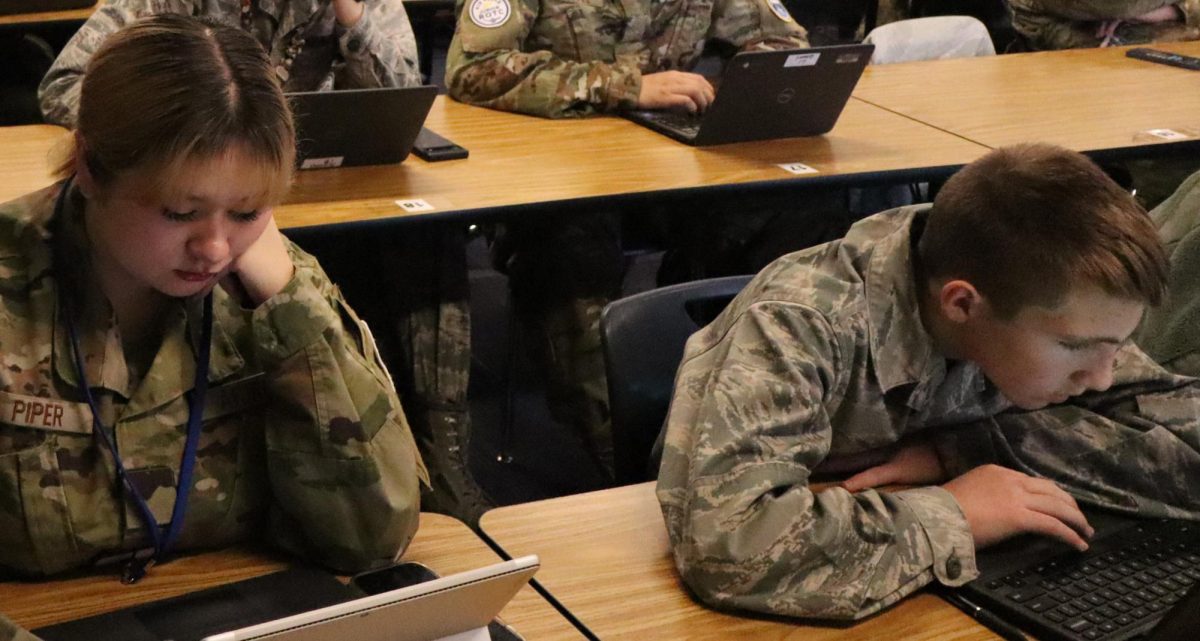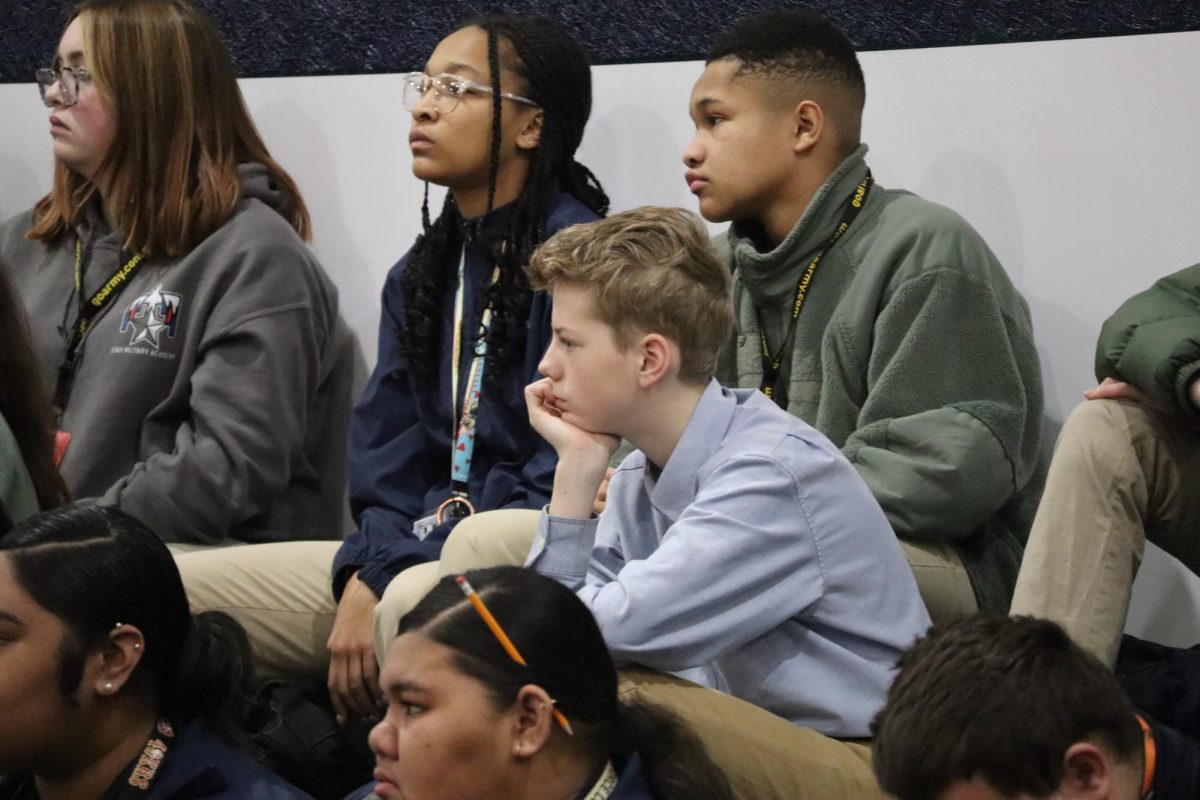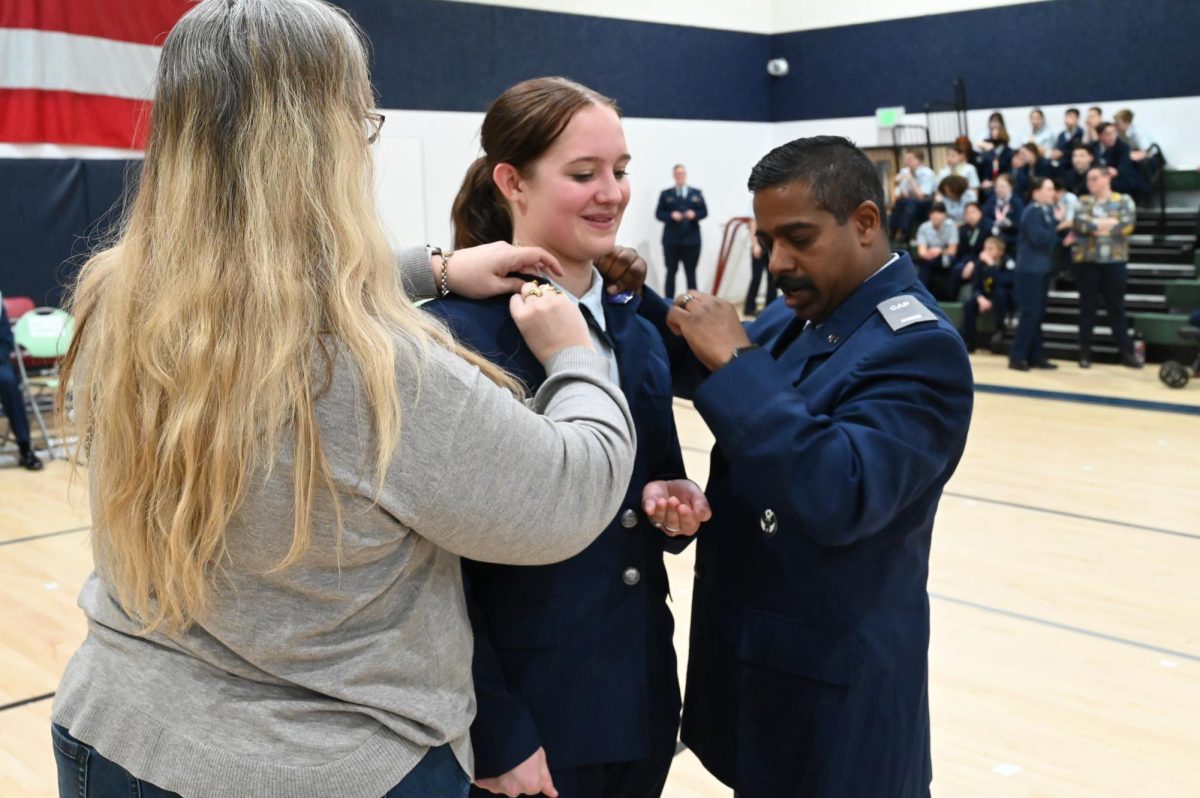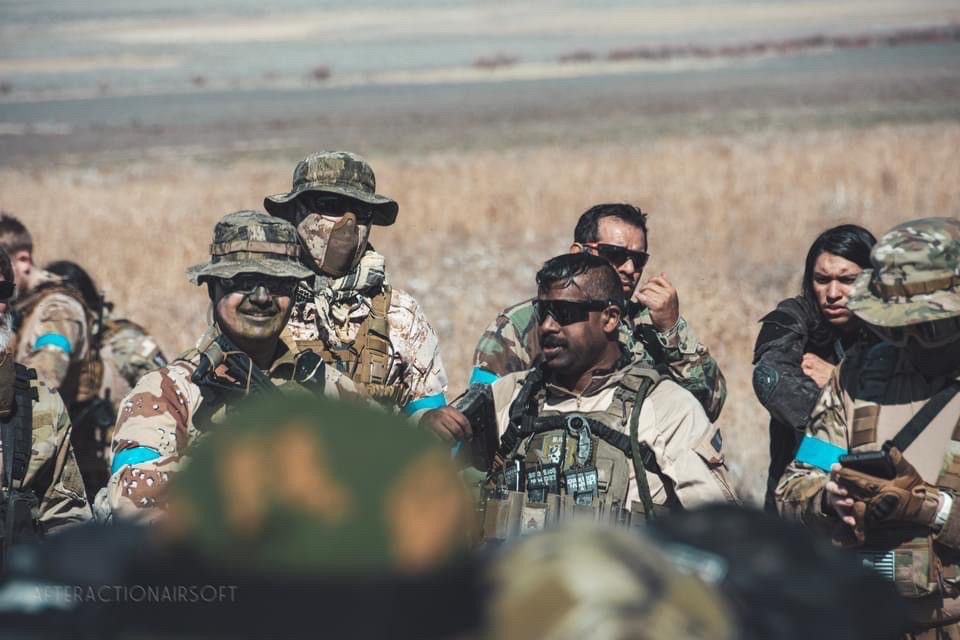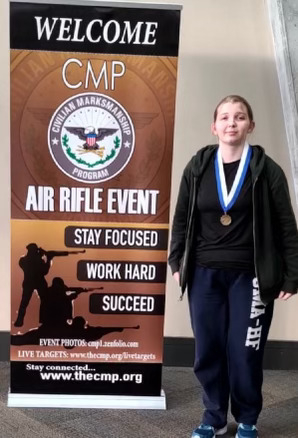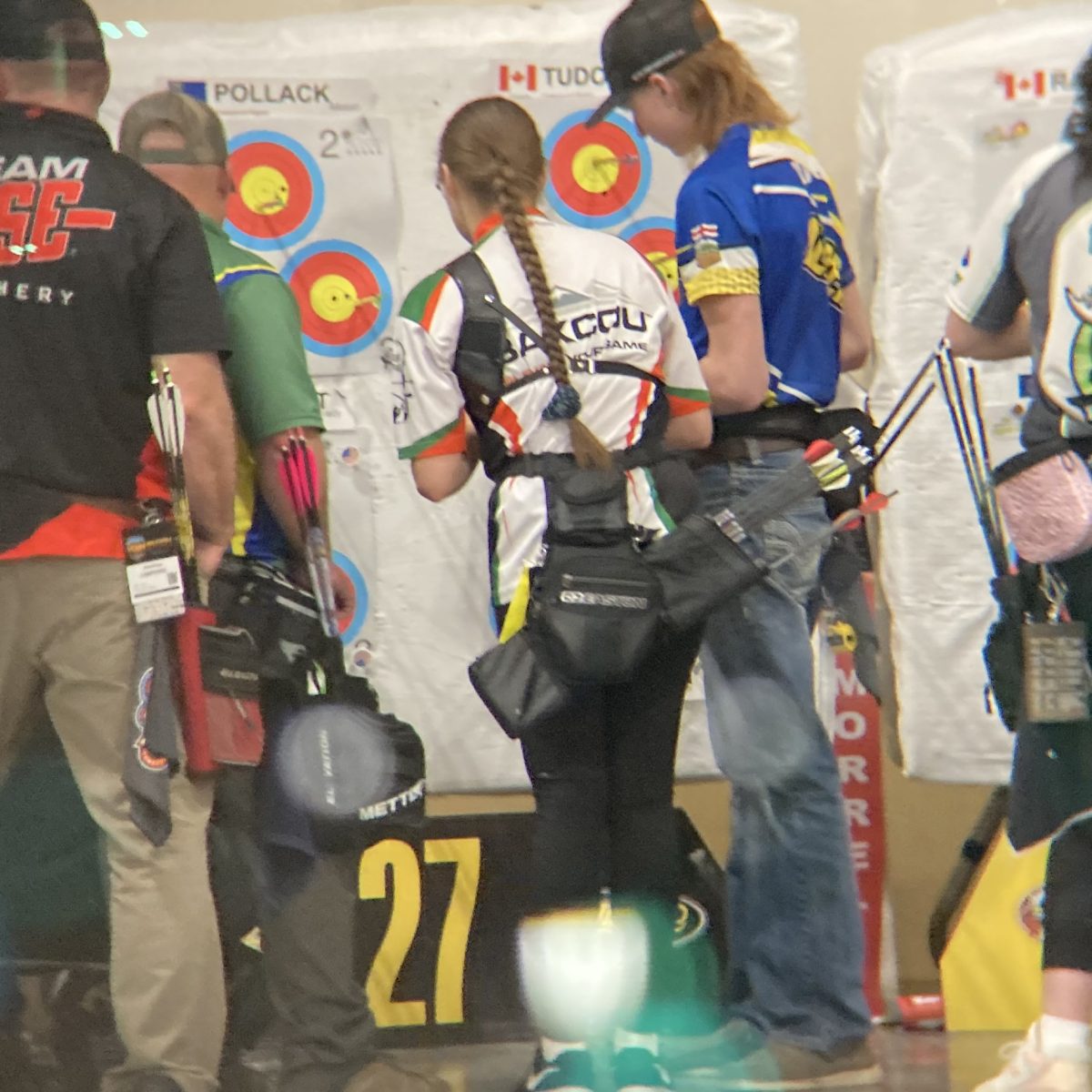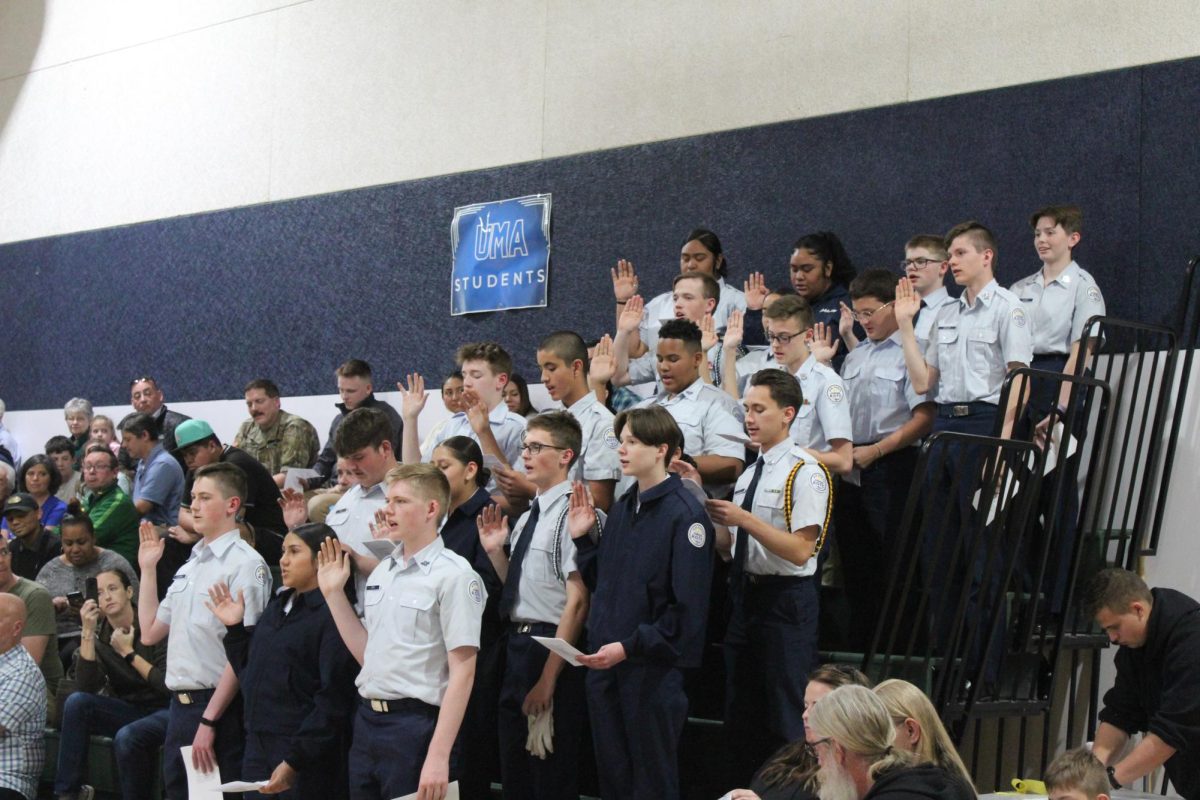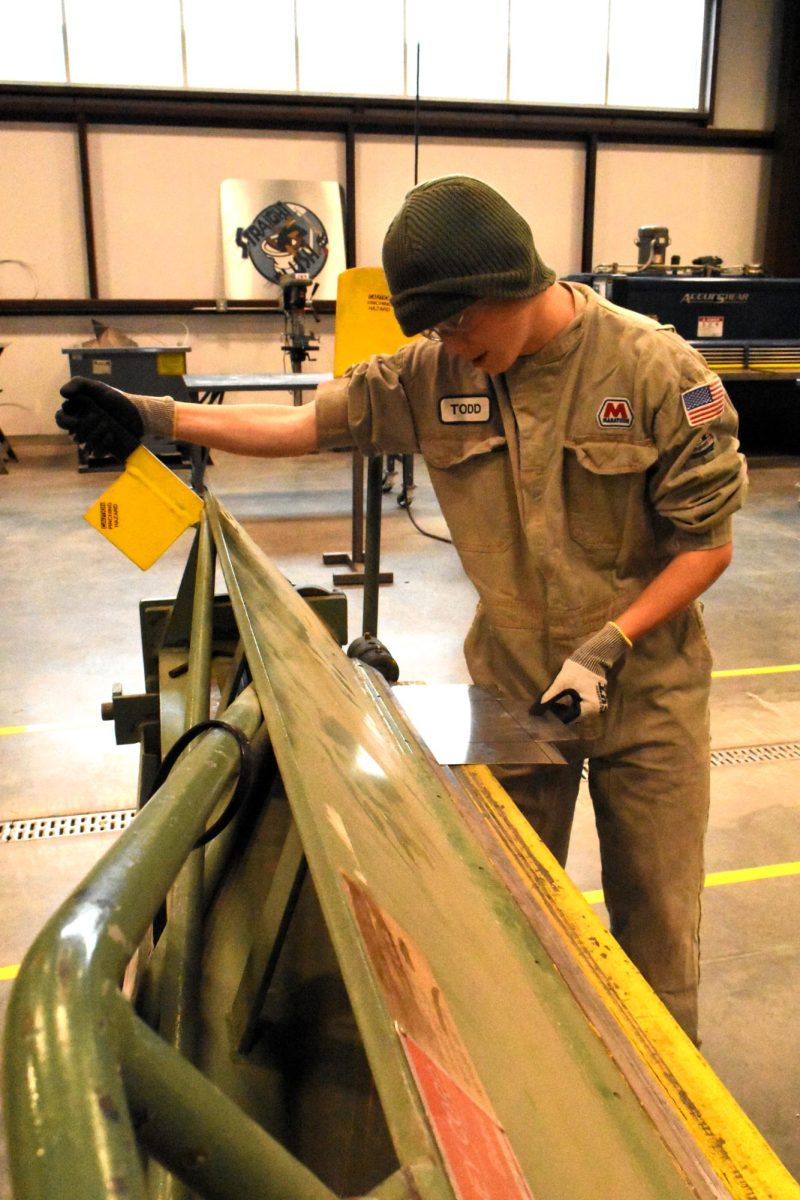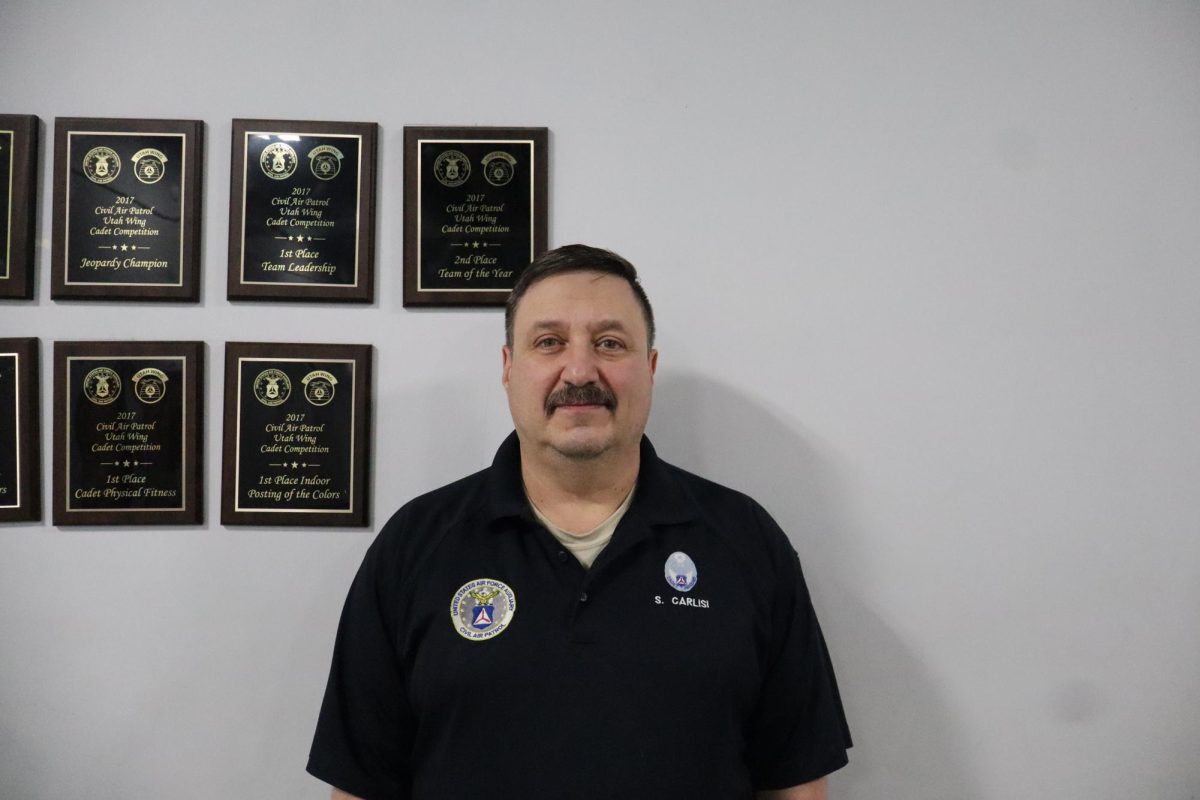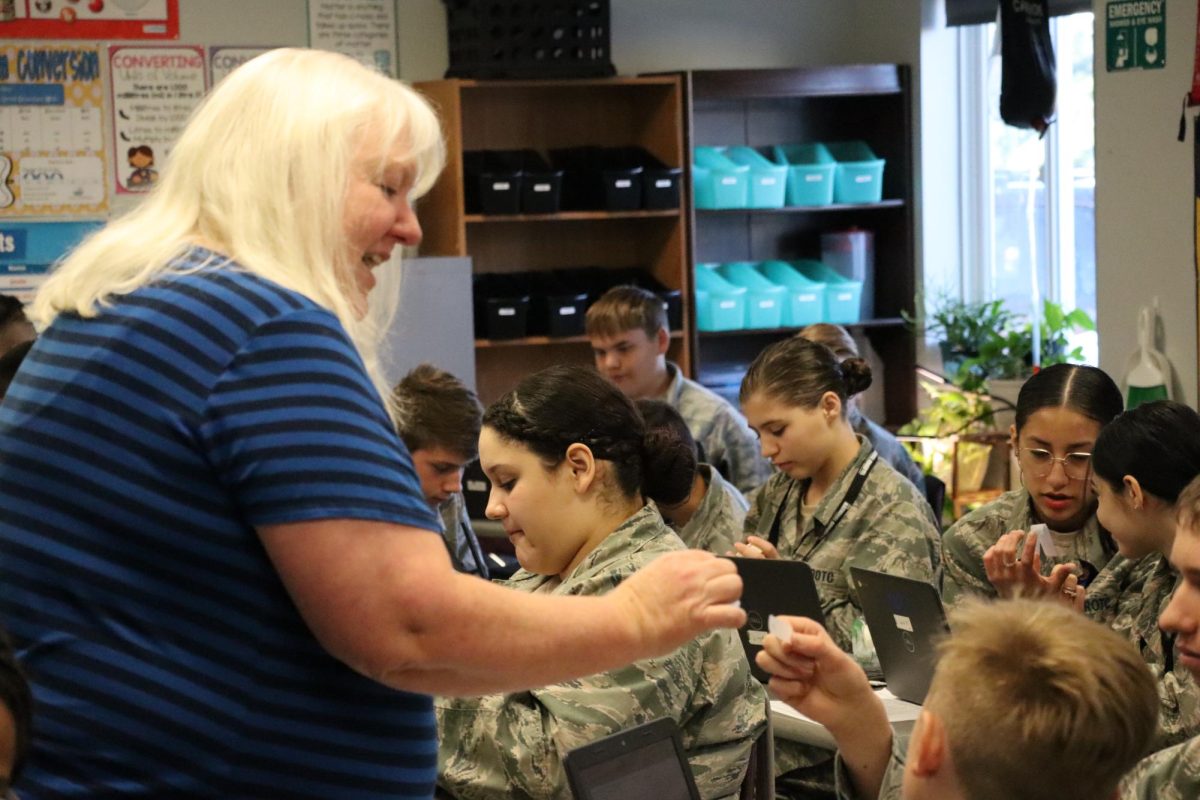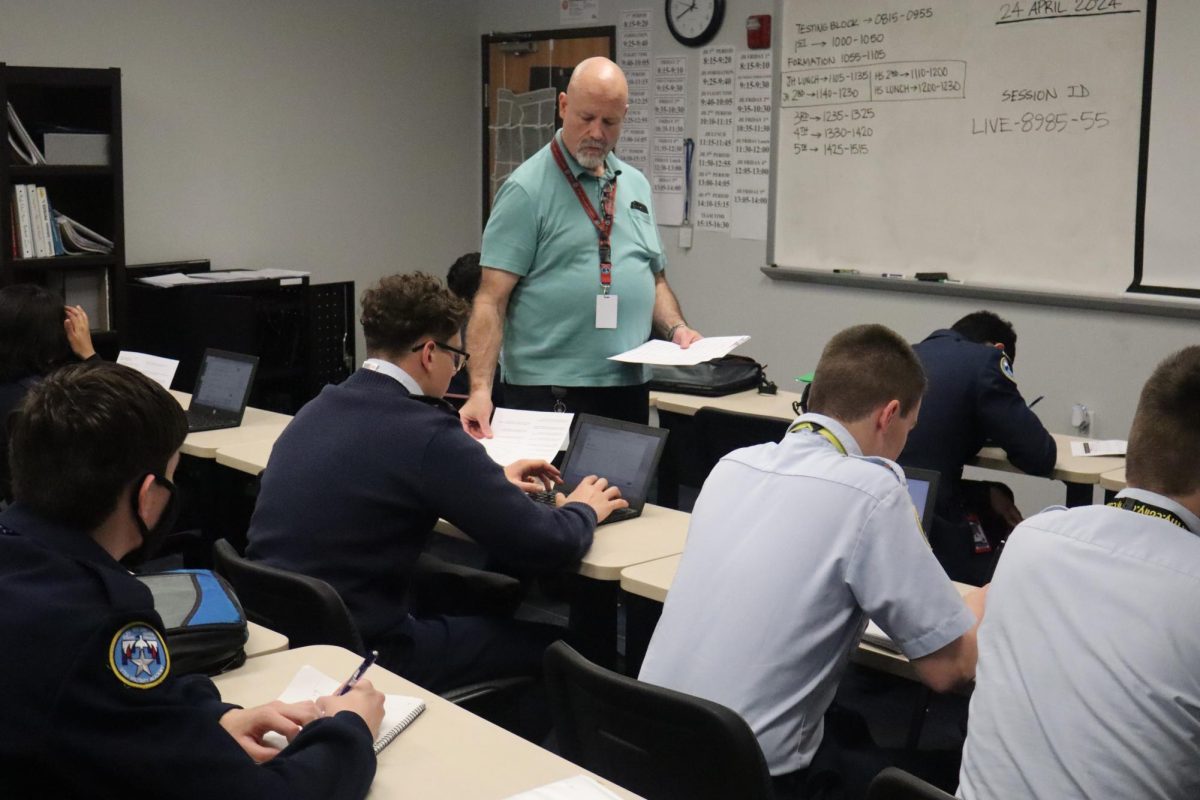The Utah Military Academy Science Fair was held on Wednesday, February 7th and highlighted some of UMA’s best and brightest young scientific minds. Coordinated by Captain Alison Carlisi, the fair included 87 total participants from the eighth grade. The cadets competed at the classroom level first.
“They can think of unique ideas, but they have to use the scientific method,” explained Cpt. Carlisi. “They started working on projects back in August when we started school (and yes, many saved theirs for the last minute, but some started right away).”
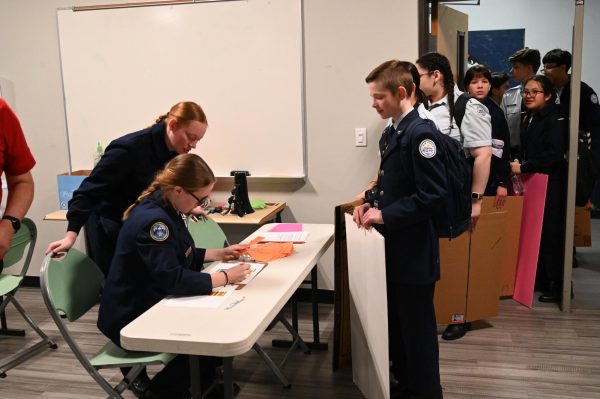
“This is the second year I have Coordinated the UMA Science Fair. The best science fair projects, the ones that really win a lot, are the ones that try to solve a real world problem. So when you think of a great question about the world around you, stop and write it down before you forget, because it could be the next unique and winning idea for a science project.”
After the classroom level, cadets were selected to compete in the school competition which was held after school on February 7th.
“We had four classifications: Engineering, Life Sciences, Chemistry, and General Science.” Each cadet set up their presentations in the cafeteria. The cadets were instructed to stay with their projects until the three judges talked with them and asked them questions. The judges scored each cadet on a scale of one to ten in several categories: Research Question, Hypothesis, Design and Methodology, Execution, Creativity, and Presentation. The presentation portion evaluates the required poster and the quality of the interview.

Captain Carlisi arranged for a panel of professional judges to preside over the competition. Unfortunately, she had to improvise at the last minute. “Our judges are a mixture of acquaintances of mine who have various degrees and good experience with science fair, and in addition there were supposed to be Air Force judges from the Air Force Association. None of them showed up, so six cadets from the National Honor Society volunteered as judges. The National Honor Society Cadets did a fabulous job! I am really grateful for them and proud of them.”
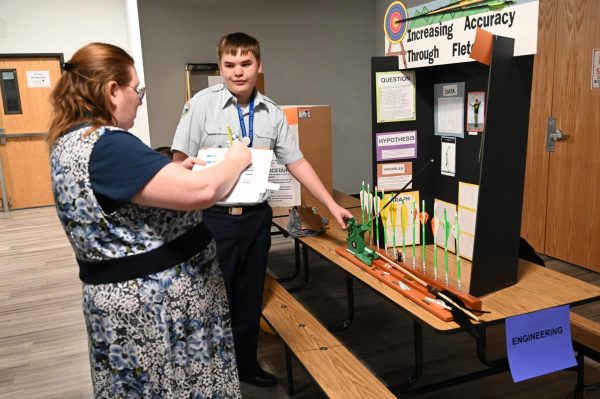
The winners of the UMA Science Fair were announced the following day during formation. The top three places in each category will advance to the Ritchey Science & Engineering Fair at Weber State University held at the end of March.
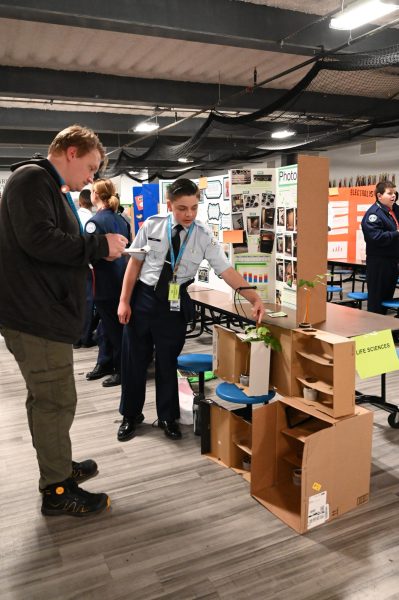
The top Science Fair Awards were given to cadets for the highest percentage score in all divisions. 1st Place was Cadet Dante Santiago, 2nd place was Cadet Carter Dursteler and 3rd place was Cadet Amyrah Blake.
In the Engineering Division, 1st place was Cadet Dante Santiago, 2nd Place was Cadet Carter Dursteler, and 3rd Place was Cadet Erin May.
Cadet May’s project was a home miniature water heater. Her biggest challenge was “being organized enough to not lose or mess up data.”
In the Chemistry Division, 1st Place had a tie between Cadet Hayden Ivestor and Cadet Seth Hadley, 2nd Place was Cadet Campbell 3rd Place- Cadet Ian Denan
In the General Science Division, 1st Place was Cadet Amyrah Blake, 2nd Place was Cadet Abigail Reza, and 3rd Place was Cadet Landon Di Tucci.
Finally, in the Life Sciences Division, 1st Place was Wyatt Carrier, 2nd Place was Alana Cook, and 3rd Place was Landon Lopez.
Cadet Lopez selected phototropism and how plants grow toward their light source. “How I made my project is by planting five beans in five pots. Then I made four boxes with different amounts of beans. The fourth box had mirrors directing light at the plant, and the other plant with no box was the control. All plants had LED grow lights on them from 6:30 to 18:30. I am looking forward to presenting my project at the Ritchey Science Fair.”
Cadet Carrier created a project that looked at the effect sound might have on bacteria. “The most rewarding part {of the science fair] was seeing my friends’ projects win or place. I got to see them smile, and we all just had a really fun time.”
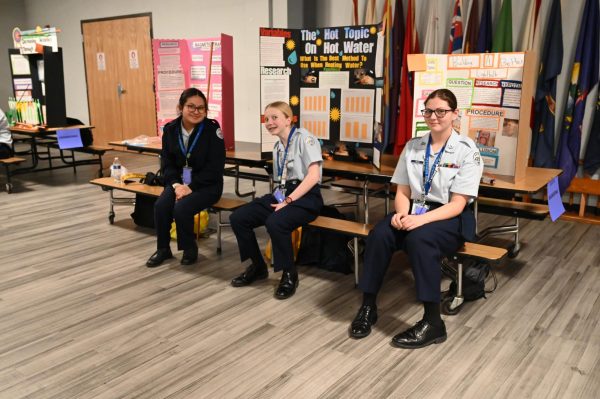
Captain Alison Carlisi knows how much time and effort goes into a science fair. She starts planning the science fair in July each year and starts helping and encouraging cadets to participate at the very beginning of the school year.
“The cadets have to do a lot of hard work before the science fair. Sometimes they can’t do that at home, so they stay after school and do their projects with me. I learn a lot of science that is new to me, because I get the opportunity to help them. I had a lot of fun this year learning how to make a magnetic train with Cadet Jacobo. We probably tried five different designs and materials until she finally got one to work, and everyone watching was cheering when it finally worked. Cadet Liest wanted to do electrolysis, which I had never done before, so we did that one together after school. It ended up being pretty cool. Cadet Carrier was mentored by Mr. Gabriele in gathering and growing bacteria. I think Cadet Landon Lopez worked the longest on his project, and he did it all on his own. He grew plants in box mazes to see if they would follow the light. Lt. Col. Carlisi helped Cadet Pena figure out how gapping a spark plug would change how an engine runs. Cadet Abraham Reyes wanted to study why different bodies of water don’t always mix, and he was able to show how one body of water can float on another. It’s many hours of work outside of time at school, but it really is a lot of fun in the end.”
Captain Carlisi is no stranger to science fairs. “I was raised in Los Alamos, home to the National Laboratory and birthplace of the atomic bomb, and my parents were scientists at the laboratory. Science Fair was a big deal in our town. I did science fair every year until 10th grade growing up, and even went to the state science fair in New Mexico several times.”
“In fact, my first job came from a science fair project I did on acid rain. Bandelier National Monument paid me to monitor the acidity of a pond high in the Jemez Mountain (in New Mexico) at the headwaters of a stream. I would ride my bike to the trail head, hike a few miles out to the pond and take measurements. I made my own children do science fair projects every year from kindergarten to 9th grade, and they did some super cool projects that won money, scholarships, and awards. My daughter Cassandra’s science fair project even went to the International Science Fair.”
Captain Carlisi hopes that UMA can expand the Science Fair to include more cadets and more grades. “What would make it better is if more grades participated. The big money and awards are given at the High School level (Senior Fair). The top award at the International Science and Engineering Fair is a $75,000 Innovator Award.”
Captain Carlisi would like to thank the numerous people that helped with this year’s science fair. “I got a great deal of support from the parent interest committee (PIC) who donated snacks and water for the participants and some ribbons. Also, UMA staff were very generous. They donated many presentation boards for students who couldn’t afford one. Mrs. McCutchan was very helpful in coordinating the NHS judges.”
It is important to note that Captain Carlisi not only volunteered numerous hours to make sure that the science fair runs smoothly each year, but she receives no extra compensation for the fair. She relies on donations from the various organizations and people mentioned above. Much of the money she uses to provide awards and other materials is out of pocket, including lanyards with UMA Science Fair embroidered on them for each of the participating cadets.
